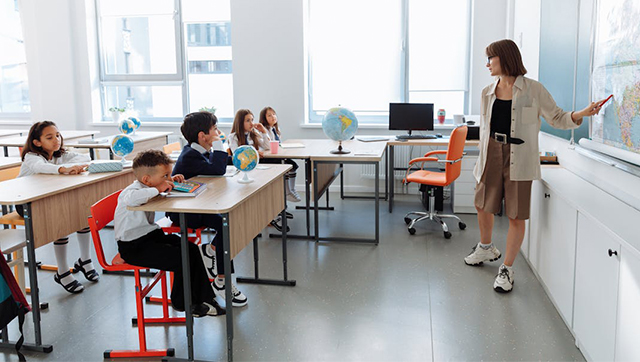Why classroom air quality is important for children?
50% of Schools report poor indoor air quality. Poor indoor air quality can affect child’s health and ability to learn, as well as increase sick leave for both students and teachers. Studies show that classroom CO2 levels of 2500 ppm had much worse test scores than at 1000 ppm.
Use the GZAIR air quality meter to monitor and enhance the classroom’s air quality.
Not only can clean air in a classroom enhance focus and performance, but it also helps to stave off allergies and other health issues. As a result, adequate classroom ventilation is crucial, particularly during influenza season. Underventilated classrooms run the risk of becoming breeding grounds for the virus. You can precisely determine when and how long to ventilate with the help of a CO2 monitor.

Why measure CO2 in a classroom?
Carbon dioxide concentration (CO2) is now thought to be one of the main factors influencing indoor air quality in recent years. When the CO2 level in the classroom is too high, the kids can’t focus as well, perform badly, and feel sleepy. The classroom’s ventilation is gauged by the CO2 level. Therefore, the more CO2 there is in the atmosphere, the more contaminated the air is, and the higher the likelihood that kids will spread viruses to one another. Because of this, it’s critical to monitor the CO2 level so that you can ventilate as soon as needed.
Ascertain the upper limit of individuals in each classroom. The C02 value rises in proportion to the number of persons in the room. The maximum number of persons in a room can be inferred if the C02 value cannot be raised to the proper level.
Air quality monitoring solutions for classroom
We have several air quality monitoring solutions. Select one that fits your need.



Students Need Healthy Air To Learn
The management of a school community with many locations can monitor the data in real-time for each school, per room, and take appropriate action.
